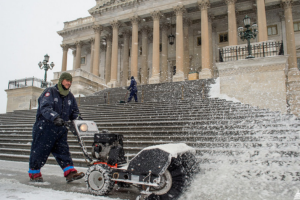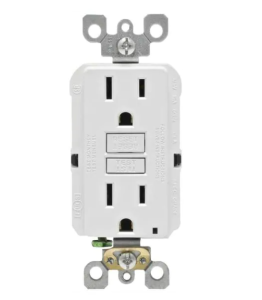Fast Facts publications provide guidance and information about safety and health matters affecting legislative branch employees.
For more information about occupational safety and health and the ADA in the legislative branch, please contact the OCWR.
Office Safety and Accessibility
Updated OSHA Guidance – Protecting Workers: Guidance on Mitigating and Preventing the Spread of COVID-19 in the Workplace
On January 29, 2021, the Occupational Safety and Health Administration (OSHA) provided updated guidance entitled “Protecting Workers: Guidance on Mitigating and Preventing the Spread of COVID-19 in the Workplace.” This…
Office Ergonomic Guidance
The Office of Congressional Workplace Rights (OCWR) is committed to minimizing musculoskeletal disorders (MSDs) throughout the legislative branch. The guidelines below include the basic elements for establishing an ergonomically sound…
Working From Home During a Pandemic
In an effort to slow the spread of coronavirus disease 2019 (COVID-19), employees are required or have chosen to stay at home to limit close contact with others. While many…
Compressed Gas Cylinder Storage
Compressed gas cylinders are utilized in a wide range of workplaces including medical facilities, restaurants, laboratories, and industrial settings. While different gases have different properties, they have similar hazards and…
Pest Prevention
FAST FACTS ON PEST PREVENTION Not all pests can be eliminated. But there are steps to take to minimize the presence of ants, roaches, and rodents. Don’t feed them! Store…
Safety Quiz
TEST YOUR SAFETY IQ How long is it okay to use an extension cord, under OSHA regulations?indefinitelysix monthsnever for permanent equipment and only 90 days for specific situations outlined by…
Emergency Preparedness
Natural Disasters
Natural disasters such as floods, blizzards, extreme heat, earthquakes, hurricanes, tornadoes, or even pandemic flu, as well as man-made events including shootings, terrorism, air pollutants, office fires, transportation accidents, chemical…
Hosting a Safety Meeting
Hosting a safety meeting does not need to be complex. Employing offices can follow these basic steps when planning the meeting: 1. Select a topic If an office has primarily…
Emergency Preparedness
Objectives Emergencies can occur at any time and with very little warning. This training is designed with the goal of achieving the following objectives to familiarize you with the basics…
Exit and Related Signs
Proper Placement and Visibility Are Essential for Emergency Evacuation Why Are Exit Signs So Important? The answer may seem obvious, but people often do not appreciate the importance of exit…
Pandemic Flu
A pandemic is a global disease outbreak marked by serious illness that spreads easily person-to-person worldwide. An influenza pandemic occurs when a new influenza virus emerges for which there is…
Fire Doors: Keeping You Out of Harm’s Way
Enclosing areas with fire barriers — fire doors, walls, ceilings and floors — is the best means of containing fire. Fire barriers play an integral role in managing a fire…
Worker Protection
Better Handwashing
One of the easiest and most inexpensive ways to prevent infection and illness from pervading your office is through the simple act of handwashing. Not convinced? Consider that study after…
Flu Prevention
As winter approaches, the U.S. is entering peak flu season. According to the Centers for Disease Control (CDC), thousands of people are hospitalized and die from flu-related illnesses each year.…
Heat Stress
Presentation Outline: Body’s Response to HeatRisk FactorsSigns, Symptoms, Prevention, and TreatmentBody Heat Balance EquationMeasuring Heat StressHeat-Related OSHA StandardsRecommended Heat Stress Exposure LimitsHeat Stress Prevention Program ElementsCase Studies – Occupational Safety…
How to Work Safely in Cold Conditions
Cold weather environments present many hazards and can be life-threatening. Cold impairs performance of complex mental tasks and reduces dexterity. Low temperatures, wind, and wetness are the three main challenges.…
Heat Stress
Don’t Let the Heat Get You Down In 2013, 16,320 U.S. workers had a heat-related illness that caused them to miss work. Heat can build up in the worker’s body…
Grounds/Landscaping
Landscaping and horticultural service workers are at risk of injury from a wide variety of potential hazards in this industry. Risks include exposure to chemicals, noise, machinery, lifting, construction, and…
Electrical Hazards
Electrical Panel Safety
Electrical hazards are among the most common safety hazards found during Office of Compliance occupational safety and health inspections. Electrical systems in the workplace have mechanisms in place to protect…
Electrical Impedance Hazards
Impedance, in very simple terms, is resistance occurring in AC (as opposed to DC) electrical circuits. The degree of resistance is measured in units called ohms. The lower the impedance,…
Power Strips and Dangerous Daisy Chains
The supply of readily available electrical outlets is inadequate in some older buildings. Extension cords or surge protected power strips are often interconnected, or “daisy chained,” to readily provide more…
Exposed Energized Wiring and Electrical Components
Poorly maintained or exposed electrical wiring increases the likelihood of fires and electrical shocks in the workplace. Employee safety is particularly at risk if wiring is prone to accidental contact.…
Temporary Extension Cords & Power Connectors Should Not Be Used for Permanent Wiring
Improper use of easily overloaded, unapproved extension cords can present a serious fire safety hazard in the workplace as well as the home. In fact, misuse of extension cords led…
Ground-Fault Circuit Interrupters
Protect You From Electrical Shock Hazards Purpose of the GFCI A ground-fault circuit interrupter (GFCI) is used to protect people from electrical shock hazards caused by malfunctioning electrical appliances. If…
Exposure to Hazardous Elements
Workers’ Right to Know: What You Should Know About Workplace Chemicals
The Occupational Safety and Health Administration (OSHA) Hazard Communication (HAZCOM) Standard, 29 CFR §1910.1200, is a “performance standard.” That means the standard does not prescribe each step of a program.…
Indoor Air Quality: Air Pollutants
Indoor air quality is not a simple, easily defined concept like a wobbly desk or a leaky faucet. It is a constantly changing interaction of complex factors that affect the…
Indoor Air Quality: Mold Questions and Answers on Mold
WHAT ARE MOLDS? “Mold” is the common term for multicellular fungi that grow as a mat of intertwined microscopic filaments (hyphae). Fungi are plant-like organisms that, because they lack chlorophyll,…
Indoor Air Quality: Radon
Radon, a decay product of uranium, is a naturally occurring gas that seeps out of rock and soil. In areas where it is present, radon gas will seep into buildings,…
Methylene Chloride Read the Label and Don’t Trust Your Sense of Smell
During its recent biennial inspection, the Office of Compliance (OOC) discovered the use of chemical products that contain methylene chloride ( CAS number 75-09-2) in various legislative branch offices. Also…
Lead – Be Aware and Beware
Lead (Pb) is a bluish-gray metal found in nature. Because it is chemically similar to calcium, it is readily absorbed by thebody. Once in the body, it can be stored…





























